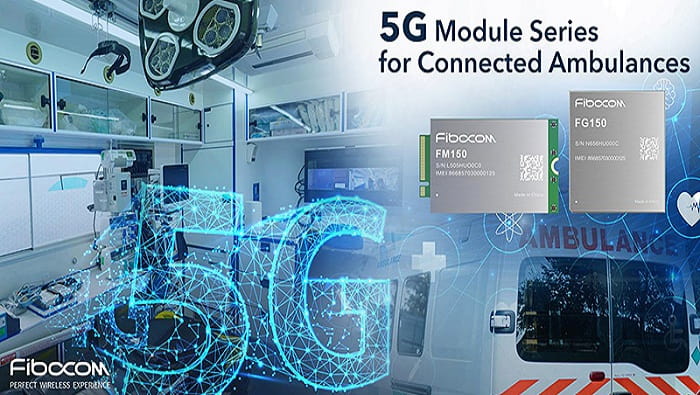With unprecedented demands on emergency services due to COVID-19 pandemic, the need for delivering high quality healthcare is now more critical than ever. In emergency conditions, each and every second is crucial in saving a human’s life. The success of emergency treatment is greatly influenced by the time, availability and accuracy of contextual information given during emergency call and ambulance transportation. Thereof, the provision of proper and timely treatment at the first scene, and collection of accurate patient vital signs are required to improve the possibility of successful emergency rescue.
What are the issues facing in emergency service delivery?
Ineffective communication is the most common weak link tied to ineffective emergency operations. This will include information passed between patients (or their relatives), ambulances and medical institutions. In reality, information or data given during an emergency call is usually inaccurate or insufficient. And the process of information collection, storage, processing and retrieval, which is conducted during an ambulance transportation, is remaining manual and time consuming. This will lead to a common situation where emergency experts lack patient’s health records and can only base the medical treatment on a series of information collected during transportation or from patient (or his relatives).
Another issue raises in delayed treatment. Nowadays, thousands of lives are being expired before the patient reaches the hospital in ambulances. In rural districts where patients locate distant from hospital, time consuming on long distances driving can be a fatal cause of death; while in crowded urban areas, unpredictable traffic conditions expose a high risk of delay in effective rescue measures.
5G-connected IoT ambulances empower medical emergency system
With the development of the Internet of Things (IoT) technology, many high-tech technologies are gradually introduced into the medical emergency system. Connected ambulances empowered by 5G’s high band width, low latency, and ultra-reliable connectivity presents tremendous benefits in improving rescue efficiency.
Fibocom 5G connected ambulance use cases
Modern ambulances are equipped with advanced diagnosis and treatment equipment like heart rate sensors, blood pressure testers, ultra-sound scanners, ECG monitors and automatic ventilators. In a connected scenario, connected equipment can monitor a patient’s vitals and symptoms while transmitting in real-time to central hospital database, providing timely and accurate electronic data and report to doctors; and the hospital can also pull up patient’s health records and share with paramedics on ambulances.
5G technology also enable 360 degree 4K/8K video streaming on the ambulances. Emergency experts can obtain a real-time interactive view by using VR headset and gain a better understanding of type and condition of emergency involved in advance. In this way, it avoids the circumstances where wrong treatments are conducted upon inaccurate or insufficient information input.
Video calling between the ambulance and hospital can turn the ambulance into a temporary consultation room. Emergency experts can monitor patient’s condition remotely, diagnose symptoms and prescribe urgent treatment which paramedics can perform on ambulance. On one hand, it saves time by allowing the hospital to do necessary medical preparation before patient reaches; on the other hand, timely implementation of treatment methods will effectively increase the chances of successful rescue.
Smart ambulances are featured with GPS that provides precise positioning that helps emergency center to assign the nearest ambulance for mission, and smart navigation that is able to plan shortest optimal route with least traffic. Furthermore, ambulances can also be connected into city’s traffic management system. Along their way to the hospital, traffic signals will be operated by using 5G message through cloud, and turn green when ambulances approach. IoT-based traffic control guarantees clearance of paths to hospital and saves time to the utmost extent.
In cases where access to city’s traffic control system is not supported, or traffic is inevitable, hospital can send out drones to transport necessary medication or equipment to the scene and assist paramedics for further treatment.
Fibocom’s 5G Modules Enable Modern Connected Ambulances
The revolutionary 5G technology creates an innovative new way to connect patient and remote medical experts in real time. It demonstrates new possibilities to modern medical system which 4G technology cannot. Fibocom’s 5G modules support reliable and seamless data, audio and video transmission on medical equipment, cameras, VR/AR headsets, and 5G CPE, making these IoT operations feasible. With super-high transmission rate and ultra-low latency, 5G-enabled equipment can reduce the possibility of misdiagnosis by synchronizing accurate real-time information to hospital. It also moves partial rescue measures forward by allowing emergency experts to instruct treatment from miles away. This would be meaningful, especially in severe and complex emergency cases, as it can shorten rescue time and help ambulance workers to best utilize, as called, “Golden Rescue Hours”.
Fibocom 5G modules for connected ambulance and telehealth
Fibocom FG150 (W)/FM150 (W) 5G modules were launched in 2019 globally. Supporting 5G standalone network (SA) and non-standalone network (NSA) network architectures. It supports the 5G Sub 6 and mmwave bands, and it is also compatible with LTE and WCDMA standards. This eliminates customers’ concern on investment in the initial stages of 5G construction as it helps customers quickly implement 5G applications in different network conditions.
Fibocom’s 5G modules have already been applied in various scenarios like 4K/8K HD live streaming, cloud office, Industrial 4.0, C-V2X, smart grid, smart security and other innovative applications, such as 5G mobile network PC, 5G HD video communication terminals, 5G electric power terminals, 5G connected devices and systems (wireless gateways, routers, CPE, SD-WAN), 5G smart dressing mirrors, 5G drones, 5G robots, 5G AR/VR, 5G cloud gaming terminals, 5G HD digital signage, and more.


















